
A Brief Description of Nutrition for Older Adults
Dietary nutrition plays a crucial role in elderly health. A balanced nutrition intake is vital for proper body function, growth, having enough energy and preventing diseases like high blood pressure, heart disease, type 2 diabetes, and cancers.
We should, however, adjust our diets and nutritional requirements as we age to stay healthy. This article provides a brief but ultimate review of the essential nutrients for seniors.
Contents
- 1 Eat Healthily, Stay Healthy
- 2 Possible Barriers in the Journey of Healthy Eating
- 3 How to Overcome Barriers in the Journey of Healthy Eating
- 4 Three Main Nutrient Categories: Proteins, Carbohydrates, and Fats
- 5 Essential Vitamins for the Elderly
- 6 The Top 3 Benefits of Having a Shopping List for Seniors
- 7 How to Read a Food Label?
- 8 Final words
Eat Healthily, Stay Healthy
What does a healthy diet look like? There are some easy instructions and plenty of foods you can use to eat healthily. For instance, you can adopt the following suggestions and table:
- Adopt a healthy eating behaviour throughout your life and choose more nutritious food and beverages with appropriate calorie levels.
- Include enough amount of all necessary nutrients in your diet. Try to use more nutrient-dense foods.
- Reduce consuming foods containing high amounts of sugar, sodium, and saturated fat.
- Track your daily calorie intake by writing down the type and amount of each meal in a day.
The following tables can also be used to edit your diet based on how many calories you need:
Chang the Eating Behaviour |
|
| From | To |
| Empty calories | Nutrient-dense foods |
| Added sugar (added salt) high calorie snakes like cookies or chips | Healthier, high nutrient snacks like nuts with no sugar and salt |
| Added sugar fruit products | Fresh fruits |
| Refined flour products | Whole grain products |
| Fats | Oils |
| Wole milk (and other full-fat foods) | Fat-free or low-fat milk (and foods) |
| Cola | Flavoured water (with fruits) |
* Empty calories are foods whose energy content is the same as other foods but lacks other nutrients like vitamins, minerals, dietary fibres, etc. Instead, they contain a high amount of sugar, fats, oils, and alcohol. Some examples of empty calories are backed goods, chips, candies and alcoholic beverages.
The Amount of Required Calorie |
|
| Woman | Calories |
| Not physically active | 1,600 |
| Moderately active | 1,800 |
| Active lifestyle | 2,000-2,200 |
| Man | Calories |
| Not physically active | 2,000-2,200 |
| Moderately active | 2,200-2,400 |
| Active lifestyle | 2,400-2,800 |
Possible Barriers in the Journey of Healthy Eating
Aging brings about a number of changes. As a result, it can be hard to maintain a healthy diet. Besides, there are undoubtedly some obstacles in the journey to healthy eating. Therefore, following through with an intelligent food choice may become harder for people, especially seniors. Some of these barriers are listed below:
- personal problems
- being alone or feeling blue
- Physical problems
- Disease, having problems in chewing, swallowing, and changing the flavour of food
- Biological problems
- The interaction between drugs and foods
- Lack of hunger, calorie intake
- Bone Fragility
Personal Problems in Healthy Eating

Being Alone or Feeling Blue
Changes in the lifestyle like living alone or limited communication may happen as we age. These changes may lead to low mood or lack of motivation in seniors and cause them to feel uncomfortable or bored. Some others find everyday cooking tedious or complicated. If so, you can arrange some meals with your friends.
On the other hand, the experience of cooking with your friend makes your time more enjoyable. Trying new recipes or learning new cooking skills may spark your interest in cooking. The article below may help you to know how to avoid loneliness.
Read more: Avoid loneliness by socializing and using technology
Physical Problems in Healthy Eating

Diseases or Problems with Chewing or Swallowing
Some particular diseases like Parkinson’s, stroke, or arthritis may cause cooking and eating difficult for seniors since they limit their physical movements. First, rearrange things in the kitchen and strengthen the senior muscles through specific exercises.
Having problems with teeth or dentures is another common physical problem among people, especially seniors. Such issues cause people to avoid eating hard-textured foods like meat, fruits, or vegetables, consequently reducing essential nutrient intake.
Difficulty swallowing may also cause problems in seniors. There are several reasons for such issues:
- Less saliva in their mouth
- Throat muscles or nerves problems
- Problems with the esophagus
- Even gastroesophageal reflux disease (GERD).
To resolve the problem temporarily, try drinking a lot of water (or other liquid) with your food.
Lactose intolerance is another disorder defined as the inability to digest dairy sugar and experiences intestinal symptoms. If you suffer from such a symptom, consult with your healthcare provider. They may recommend you get enough vitamin D and calcium using non-dairy calcium recourses and lactose-free dairy products.
Biological Problems
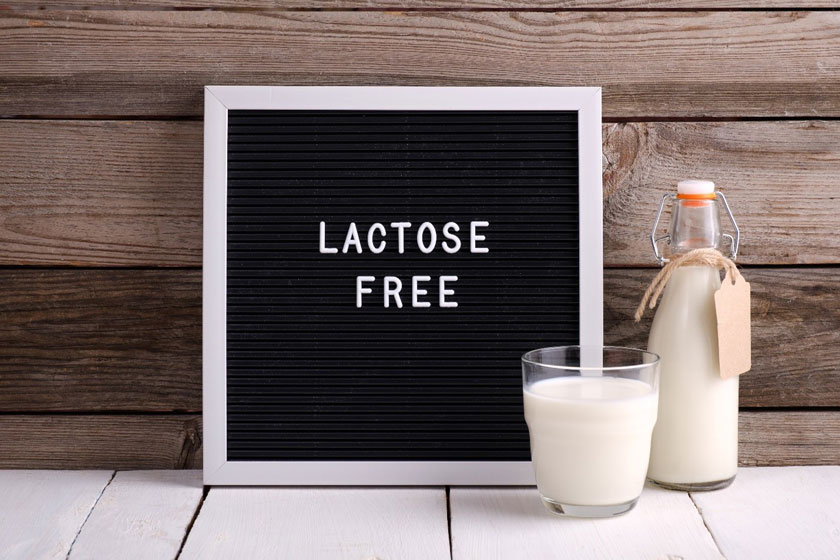
The Interaction Between Drugs and Foods
Today It is known that Some special foods can change medicine’s work. Some well-known examples are grapefruit juice, chocolates, licorice, alcohol, etc. If you have a newly prescribed drug, consult with your doctor to best know any possible food-drug interactions. Moreover, many medications prescribed to seniors can cause decreased appetite or nausea, leading to reduced food intake. Some may require seniors to limit or avoid certain foods due to potential interactions or adverse side effects. For example, blood thinners such as warfarin may require seniors to avoid foods high in vitamin K, which can interfere with the medication’s effectiveness.
Lack of Hunger and Calorie Intake
As a result of dental problems, side effects of medications, or just feeling full sooner, the sense of taste, smell, and hunger may change. The smell and taste of foods directly relate to having enough appetite and nutrition intake.
Bone Fragility Problems
Bone Fragility is a problem that everyone may experience. However, it is more prevalent in seniors due to overweight or insufficient calcium uptake. The best way to keep both muscles and bones without insufficient nutrient intake is exercise and going on a diet is the second solution. However, suppose it is necessary to go on a diet (read more about trending diets for seniors). In that case, there are natural fibre-rich foods to curb hunger you can eat both to lose weight and suppress your appetite.
How to Overcome Barriers in the Journey of Healthy Eating
Here are some tips and instructions for overcoming barriers and gaining access to healthy foods.
Edit the Eating Behaviour
Consuming nutrient-dense, low-fat or fat-free foods, and avoid empty calories. Try to use different types of fruits and vegetables since they are a good source of nutrients, fibre, and low calories. It is believed that fruits with bright colours are the best foods to prevent cancer. There are also the best fruits for seniors with diabetes you can buy. Refer to table 1 to find the best and worst foods for a healthy diet.

Pay Attention to Food Safety
Food-borne diseases can be severe in each person who doesn’t care about food safety, and so do seniors. Raw or undercooked eggs, meat, poultry, shellfish, unpasteurized milk, or other dairy products may be harmful due to microorganism growth. Expired canned foods, deformed- or swollen cans are also harmful and should not be used.
Drink Enough Water and Stay Hydrated
Staying hydrated is essential for being healthy. However, as we age, we may lose our sense of thirst. As well as that, seniors may take medicines that need drinking a lot of water. Low-fat or fat-free milk, natural juice, and some herbal tea like chamomile tea can also help you stay hydrated. Instead, you should avoid drinking beverages containing a high amount of sugar or salt.
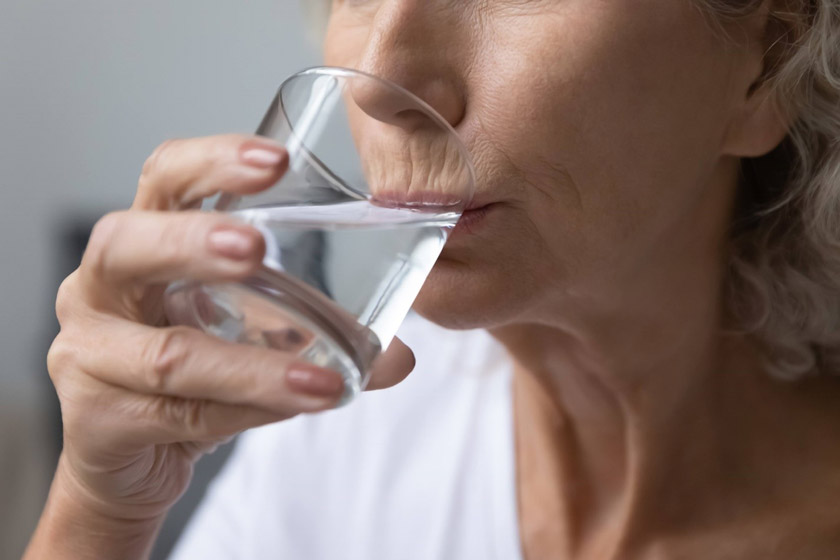
Consider Your Teeth and Gums
To stay healthy, you should consume fruits and vegetables even if you have dental problems and can’t chew hard-textured foods properly. In this regard, you can try cooked or canned fruits and vegetables (of course unsweetened ones), fruit puree, low-sodium vegetable soaps and other soft foods like that.
Take Vitamins and Other Supplements If Necessary
Some people can’t get enough vitamins and minerals from their diet and need to consume those as supplements (see signs of vitamin deficiency in seniors). Nevertheless, taking dietary supplements should be based on your doctor’s advice. Overusing them may cause some health problems for seniors or sometimes interact with prescribed drugs.
Stay Physically Active
Exercise and physical activity for seniors help to stimulate their appetite and hunger.

Make Eating a Social Event
Try to eat meals with your friends or take part in a potluck; these social activities make your meal more enjoyable and pleasing.
Three Main Nutrient Categories: Proteins, Carbohydrates, and Fats
Three Main Nutrient Categories: Proteins, Carbohydrates, and Fats
In the following, we will talk about the three main categories of nutrients for the elderly and state how much they need from these three categories.
Proteins
Proteins are one of the essential nutrients known as the human body’s building blocks. These molecules are found in almost all parts of our body. They have a wide variety of functions, from the immune system to producing energy. Food resources of proteins are divided into two categories:
- Animal-based proteins
- Plant-based proteins
In general, plant-based proteins have lower saturated fat and cholesterol and contain fibres and other health-promoting ingredients.
Carbohydrate
The human body mainly uses carbohydrates to produce energy. Food groups like fruits, vegetables, dairy, grain and seeds, sugar, honey, syrup, cookies and candies all contain carbohydrates. However, it’s better to get carbohydrates from fruits, vegetables, and whole grains rather than added sugar products and refined grains. In addition to carbohydrates, the first group contains dietary fibres that our body can’t digest. Adding foods with dietary fibres into a meal can prevent stomach or intestinal problems like constipation, cholesterol and blood sugar.
follow these steps to add fibre into your diet:
- Consume cooked dry beans, peas, and lentils
- Eat whole fruits and vegetables with their skins
- Use whole fruit in your diet rather than fruit juice (see the benefits of fruit vs. fruit juice for seniors )
- Utilize whole grain bread and serials
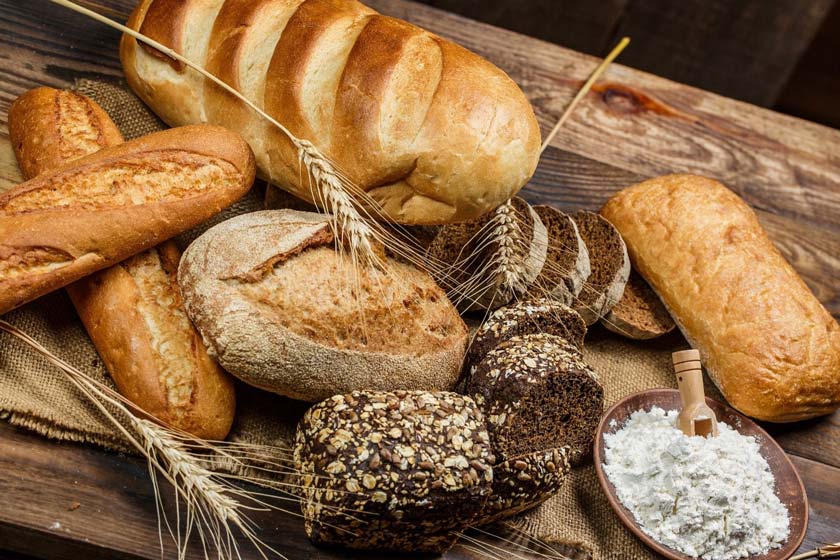
Oils and Fats
The primary role of fats in the human body is to produce energy for daily activities. Additionally, our body needs fats to absorb oil-soluble vitamins. Also, essential fatty acids that take part in body functions must be consumed from foods. Fats are naturally available in many foods like dairy, poultry or red meats, eggs, coconuts, nuts, etc.
it is noteworthy that some fats that are harmful to our body include:
- Saturated fats. These groups consist of fats in the solid states and are mainly found in butter, beef fat, coconut, palm and palm kernel oils.
- Trans fatty acids (trans fats). These harmful fats are artificially produced during food processing. These may still exist in small amounts in processed foods like frozen pizza, margarine, coffee creamer and desserts.
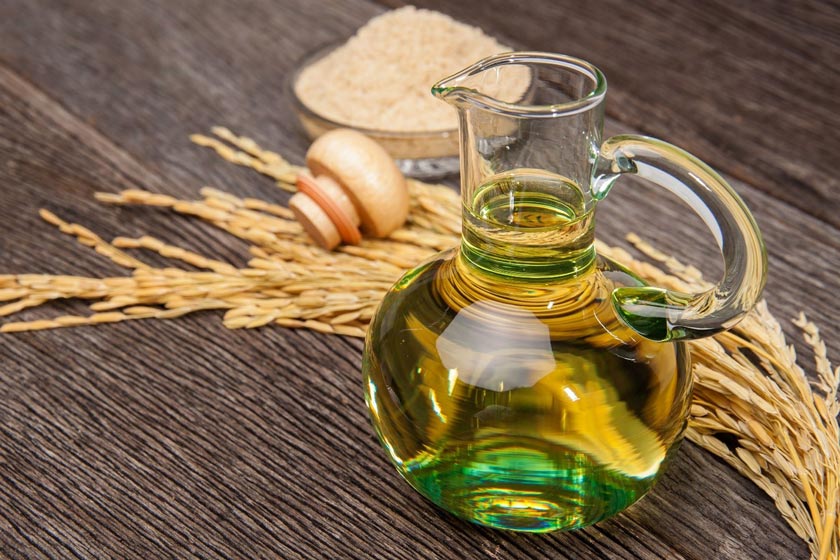
To have healthy eating, try to limit your solid fat consumption to less than 10% of the total calories per day. Instead, you can use more beneficial fats to keep the total fat intake balanced. Two main categories of healthier oils are:
- Monounsaturated fats
- Polyunsaturated fats
The difference between healthy and harmful fats is that the first group is liquid at room temperature; thus, less likely to cause heart disease.
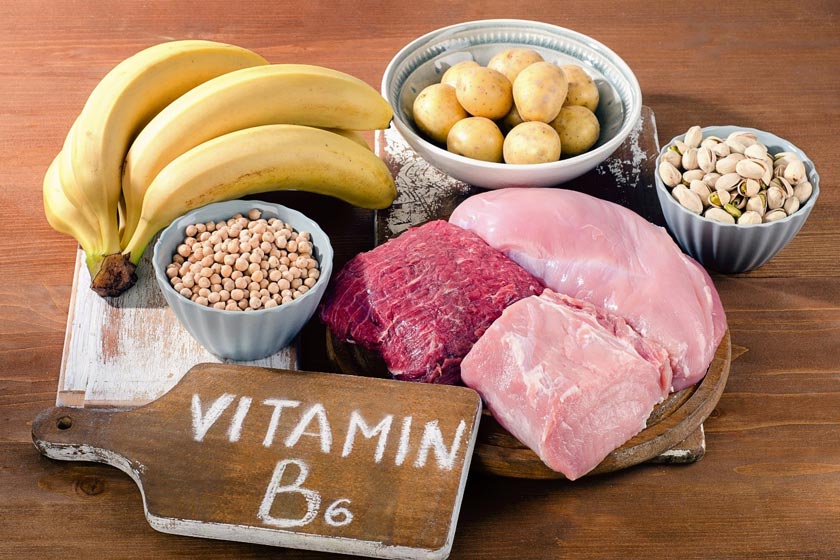
Essential Vitamins for the Elderly
The human body needs vitamins and minerals to stay healthy and do its normal functions. This need is higher in seniors due to some eating or absorbing problems they may face. Thus, it should be determined how much of these nutrients are needed for seniors in different age ranges.
There are 13 essential Vitamins for the elderly, including A, C, D, E, K and B groups. The vitamin B group consists of eight different vitamins, including:
Vitamin B Group |
|
| Thiamine | B1 |
| Riboflavin | B2 |
| Niacin | B3 |
| Pantothenic acid | B5 |
| Pyridoxine | B6 |
| Biotin | B7 |
| Folate | B9 |
| Cobalamin | B12 |
All vitamins play a specific role in the body. Some of them have resistance roles against infection; some help the blood clot properly when your vessel is injured, and so on. For this reason, it is necessary to get enough vitamins from our diet.
Minerals are also vital for proper human body function. These micronutrients are found in foods and the earth. The needed amount of minerals depends on their type of them. For example, our body needs iodine and fluoride in a minimal quantity. In contrast, relatively high amounts of calcium, potassium, and magnesium are required for body health. Note that different foods from each food group contain different nutrients. So, by consuming all food groups throughout the week, you will more likely get enough vitamins, minerals, and even other nutrients.
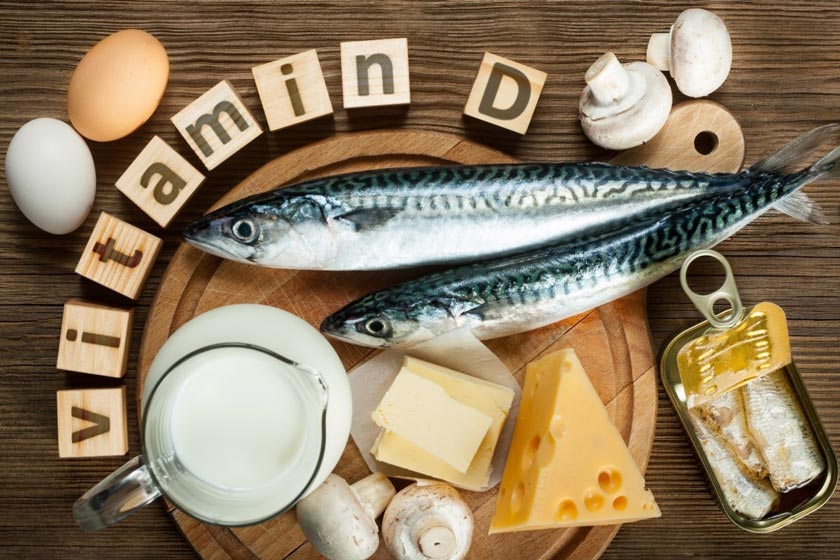
Recommended Sodium Intake for Seniors
We consider sodium separate since it is dangerous and cause chronic disease if consumed more than the recommended amount. Due to deadly sodium-related diseases like high blood pressure, heart disease, heart attack, and stroke, you should carefully monitor sodium intake (to get more information, refer to the article “salt and the effects of high salt consumption on seniors“).
It is recommended that seniors older than 51 reduce sodium intake to 2300 mg, equal to one teaspoon per day. This amount includes the salt used for food processing, cooking and on the table. Seniors who already have high blood pressure or prehypertension should limit sodium consumption to as low as 1500 mg or 2/3 teaspoon per day.
How to Have Complete Control of Sodium Intake?
- Prepare your meal at home and use less processed foods.
- Choose foods in-store that are marked as “low-sodium,” “unsalted,” “sodium-free,” or “salt free.”
- Consume more vegetables and fruits. These foods are low in sodium and have a higher amount of potassium.
- add less salt to your meal while cooking or eating,
- consume sauce and dressing as low as possible and just for taste
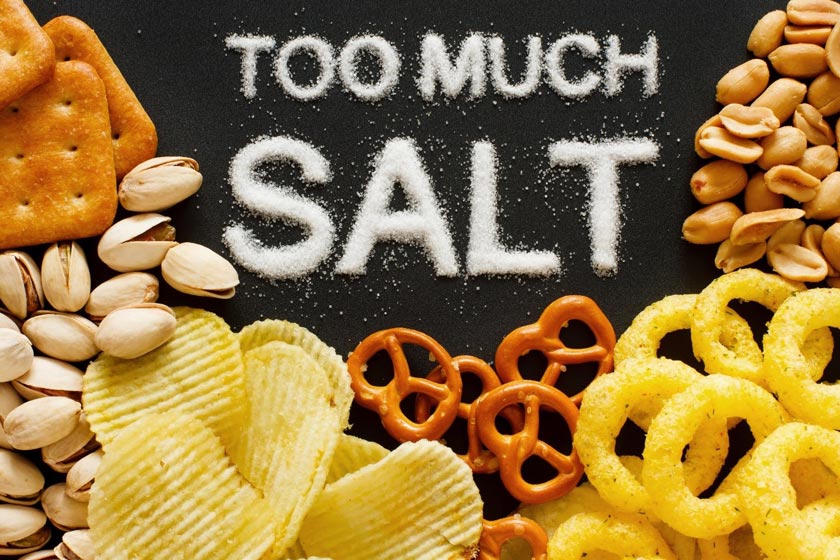
Units and Measurements Used for Minerals and Vitamins
The most common units and measurements used for expressing the amounts of vitamins and minerals in foods are as follow:
Amounts of Vitamins and Minerals in Foods |
||
| Unit | Abbreviation | Description |
| Milligram | Mg | One thousand of a gram |
| Microgram | Mcg | One million of a gram, i.e., 1000 mcg equal to 1 mg |
| International Unit | IU | Depends on the type of vitamin and mineral you can convert mg or mcg into IU |
The Top 3 Benefits of Having a Shopping List for Seniors
Making a shopping list is pretty straightforward and brings several benefits. By preparing a shopping list,
- It helps you remind your needed nutritional foods and keep essential food requirements in your mind.
- It helps you follow your food budget.
- Shorten your shopping time and decrease the risk of fatigue.
Besides, to save time and get less tired, it’s unnecessary to buy all food items every time you go grocery; instead, you can buy some food you can store for a while.
Shelf-Stable Food Items |
|
| Food items | Shelf life |
| Whole-grain cereal | 6-8 months past a “best by” or “used by” date |
| Whole grain Flour | 4-6 months past a “best by” or “used by” date |
| Canned low-sodium soap and fish | 2-5 years past a “best by” or “used by” date |
| Dried fruits | Six months past a “best by” or “used by” date at 80 ºF or 27 ºC. |
| Frozen vegetables and fruits | 8-12 months past a “best by” or “used by” date |
| Shelf-stable milk is either powdered dry or ultra-pasteurized milk. | Up to 6 months at room temperature |
| Pasta and rice | 2-4 years past a “best by” or “used by” date |
How to Read a Food Label?
Labels on packaged foods contain a lot of information about the nutrients and safety of the food. By reading food labels, we can have better and healthier food choices. Information you should look for on the food labels is listed below:
1. Product Dates
Usually, there are three types of dates on the food labels:
- “Sell by” refers to the manufacturer’s suggested date that a store should sell its products before.
- “use by” means when a portion of food is in its peak quality, and if it is sold after that date, some ingredients may be stale or less tasty.
- “best if used by” or “best if used before” means how long a food has the best flavour and quality.
* Note that product dates are not safety dates, and there are no obligations to add them on the labels (except for infant formula products)
2. Ingredient List
It’s a list in which each food ingredient is included. The ingredients present at the top of the list have a higher weight. Those at the end of the list have a lower amount.
3. Nutritional Facts Label
Manufacturers must add nutrition facts labels on the packaged foods and beverages based on FDA regulations. The total number of servings in the food container and serving size can be observed on the top of the below labels. Serving size is not a recommendation for a portion; it shows a typical amount of a specific food people eat at one time. Here, two nutrition facts labels are presented:
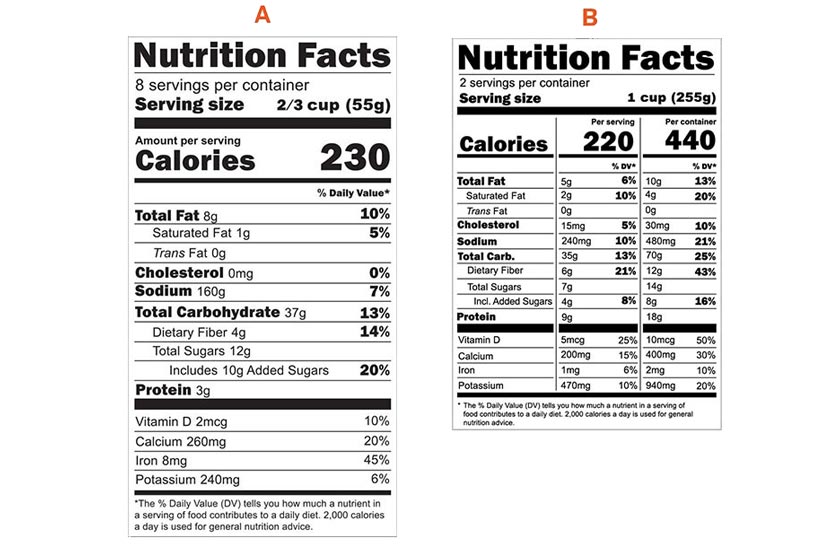
Other nutritional information is calculated based on one serving of the food. In other words, if the container consists of more than one serving, the label comes in two columns. The first column represents the nutrients and calories based on one serving—the latter is calculated based on the whole container (label B).
4. Daily Value
Daily value or DV is a reference amount of a nutrient not to exceed each day. %DV shows the quantity of a nutrient in a serving that constitutes a total daily diet. Usually, DV is reported based on a 2000-calorie diet. There is no reported %DV for some nutrients on the facts label in some cases. Therefore, you can use the number of grams written on it.
It’s better to choose food items with less than 100% DV of the nutrients per day to avoid consuming saturated fats, sodium, and sugars more than recommended levels. It is worth mentioning that if the amount of a specific nutrient per serving is 5% DV, it is considered low; if the amount is 20% DV, it is deemed to be high.
Final words
All human bodies need a balanced nutrition diet for proper function. This article introduces healthy foods, nutrition, and activities that help seniors stay healthy. Additionally, this article is dedicated to some barriers seniors may face in the journey of healthy eating and provides helpful tips to overcome these barriers. Share with others if you plan to change your diet based on this list or have made some changes recently in the comment section.
This article gave me all the information I wanted to know. Thank you so much. And I just realized I keep flour in the fridge, which is wrong, apparently.
Thanks for the great article. I have a big concern; my husband does not drink water. It drives me crazy sometimes. He is 68, his last check-up test was great, but he has anemia. It’s not severe, and he doesn’t need to take iron supplements, and his doctor insists he’d be ok if he drinks enough water. The problem is he doesn’t have any problems with drinking water! I know some people can’t tolerate drinking water. He just forgets or is too tired to pick up the glass! What can I do?
Have you ever tried other drinks like fruit juices or something like that? You can prepare a bottle of Flavored water or even detox water instead of tap water! Sometimes people are reluctant to drink water since it has no taste! the critical point is drinking enough water and fruit juice, flavoured and detox water all provide enough water for the body
I really like this article because it has all the things that seniors should eat during their days. With the tables, we can count every food’s calories and manage our gain calories every day. For example, we don’t have to delete the carbohydrates foods of our lives forever. We can manage it clearly and enjoy it. Or maybe we like to eat some delicious foods like chocolate or fatty foods. Also, alongside eating, we need to do routine exercises to have a healthier body.